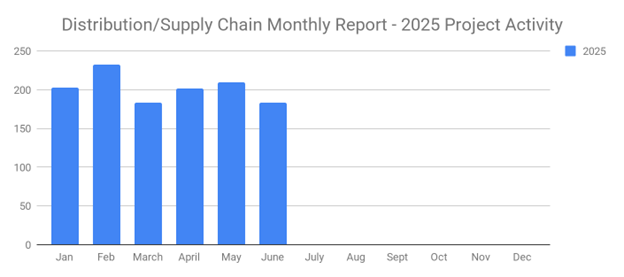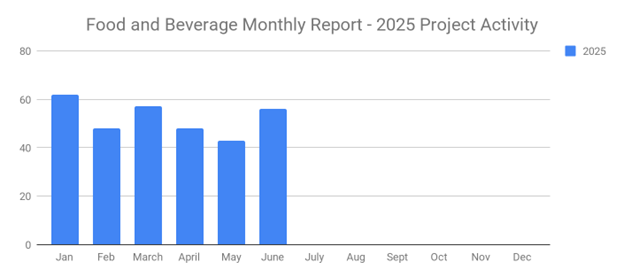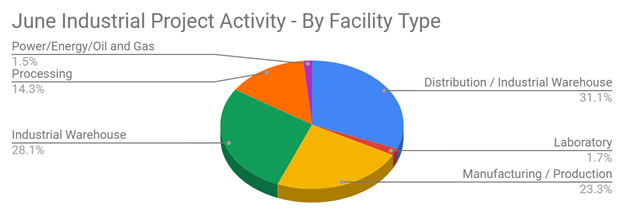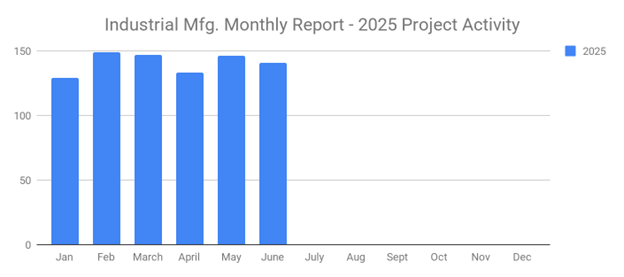
As you’ve adjusted to working from home, you might find that most of your calls are ending up in voicemail. This can be a frustrating experience, leaving you feeling like your efforts are going unnoticed. However, it’s essential to remember that there are multiple ways to reach your prospects, and diversifying your approach can significantly improve your chances of success. With prospects potentially working on-site, from home, or a combination of both, it’s more important than ever to be thoughtful about your timing and clear in your messaging. Whether you're involved in industrial lead generation, business development hiring, or appointment setting services, these nine effective tips can help you deal with unresponsive prospects and keep your sales pipeline active and robust.
#1) Contact As Soon As Possible
The sooner you contact a prospect after acquiring him or her as a sales lead, such as the website, campaign or from SalesLeads' Project Reports, the greater your chance of getting a response. Timing is critical in sales, and the sooner you reach out to a prospect after acquiring them as a lead, the better your chances of getting a response. Unfortunately, many B2B sales reps fall into the trap of delaying their initial contact, sometimes waiting days, weeks, or even months. By the time they finally make contact, the prospect may have forgotten about your company or, worse, chosen a competitor.
To avoid this pitfall, make it a priority to contact your leads immediately. For industries like manufacturing lead generation or facilities services, where competition is fierce and opportunities are fleeting, this prompt response can be the difference between winning a new client or losing them to a rival. One effective strategy is to keep a log of each outreach attempt, noting the date and time, to hold yourself accountable and ensure timely follow-ups. This approach not only helps you stay organized but also ensures that no lead slips through the cracks, which is crucial in maintaining an active sales pipeline.
#2) Look for the Prospect's Direct Phone Number
If a sales lead hasn't responded to your initial sales message and you're unable to reach him or her by phone, try searching for the prospect's direct phone number if your calling from something other than a Project Report from SalesLeads. Many B2B buyers give out their business's phone number when submitting lead forms. If you call a prospect's office, you'd normally get a receptionist or other "gatekeeper" on the line. Now, you may just go directly to a general voicemail, or the sales leads voicemail. Try to find the prospect's direct phone number to increase your chance of getting a response. Assuming you know the prospect's name and business for which he or she works, you can check LinkedIn to see if the prospect's direct number is listed, or try to connect with them.
If your initial outreach doesn’t yield a response, and you’re struggling to connect with the prospect by phone, it’s time to dig deeper. Many B2B buyers provide their company’s main phone number when submitting lead forms, which often leads to a general voicemail or a gatekeeper. In today’s environment, where direct communication is more important than ever, you might be directed straight to a general voicemail rather than the prospect’s direct line.
To increase your chances of reaching the prospect, try searching for their direct phone number. LinkedIn can be a valuable resource for this, as it may list the prospect’s direct contact information. Additionally, consider using specialized tools like SalesLeads’ Target Account Sales Intelligence, which provides direct phone numbers, email addresses, and other vital contact information to help you connect with the right people. In industries such as construction projects or material handling marketing, where reaching the right decision-maker is key to advancing the sales process, having direct access can significantly improve your outreach success.
This will allow you to look up the company name, and download the right person or persons to contact. You'll get the name, title, address, direct phone number and email address. The email address will certainly prove useful right now.
#3) Create a Sense of Urgency
One of the most effective ways to prompt a response from a prospect is to create a sense of urgency. Whether you’re offering a product or service, emphasizing the immediate benefits your solution can provide—especially in challenging times—can compel prospects to act quickly. For example, in industrial marketing services or manufacturing construction, where timelines and efficiency are critical, highlighting how your product or service can solve urgent problems can be a powerful motivator.
You might also consider offering a limited-time discount or special promotion, which can further incentivize the prospect to respond. Letting the prospect know they can save 10% or 20% by ordering within the next 48 hours could push them to make a decision sooner rather than later. The key is to make your offer compelling enough that it feels like a ‘must-have’ rather than just a ‘nice-to-have.’ By creating a sense of urgency, you can drive faster decision-making and keep your sales pipeline moving forward.
#4) Get Personal
Personalization is a powerful tool in sales, particularly in complex industries like industrial sales and marketing services or process equipment sales. Generic, cookie-cutter messages are easy to ignore, but personalized outreach shows the prospect that you’ve done your homework and are genuinely interested in addressing their specific needs. Research shows that personalized sales messages generate up to twice as many responses, on average, than generic and non-personalized sales messages. Again, let them know how your product or service can help them through this difficult time.
Tailor your messages to reflect the prospect’s unique situation, industry, or challenges, and clearly explain how your product or service can help them navigate these uncertain times. For instance, if you're targeting prospects in the food and beverage construction sector, reference how your solutions have helped similar companies streamline their operations or reduce costs. By demonstrating that you understand their specific needs and challenges, you build trust and increase the likelihood of a positive response.
#5) Use Multiple Communication Channels
Relying on a single communication channel—whether it’s phone, email, or LinkedIn—can limit your ability to connect with prospects. Instead, diversify your approach by utilizing multiple channels to reach out. Consider networking with industry partners or complementary service providers who might be able to introduce you to the prospect. Explore whether the prospect is active in professional associations or has participated in recent industry events.
For example, if you're involved in logistics or industrial supplies, attending the same conferences or webinars can provide opportunities for connection and establish a rapport. By casting a wider net, you increase your chances of making contact and engaging with your prospects. In sectors where decision-makers are often busy or hard to reach, such as in compressed air or control systems sales, using a multi-channel approach ensures that your message reaches them through their preferred medium, improving the odds of a successful engagement.
#6) Contact Other Decision-Makers
If your primary contact isn’t responding, it may be time to reach out to other decision-makers within the same organization. While your original prospect might be unresponsive, someone else in the company could be more receptive to your message. In many cases, a different decision-maker might have a more immediate need for your product or service, or they may be more responsive to outreach. Don’t hesitate to explore other contacts within the organization—this approach could uncover a valuable advocate for your solution.
For instance, in manufacturing business development or outsourced business development, identifying alternative decision-makers such as project managers or operations directors can open new avenues for discussion and increase the likelihood of moving the sale forward. By broadening your contact base within the organization, you create multiple entry points for your sales pitch, improving your chances of finding someone who is ready and willing to engage.
#7) Reinforce Value Proposition
Your value proposition is the cornerstone of your sales message, especially in specialized industries like material handling sales or industrial equipment sales. It articulates the specific benefits of your product or service and why it’s the best choice for the prospect. If your outreach isn’t generating responses, it may be time to revisit and reinforce your value proposition.
Make sure it’s clear, compelling, and directly tied to the prospect’s current challenges or goals. Whether you’re reaching out by phone, email, or another channel, consistently emphasize how your offering can deliver real value, particularly in today’s business environment where efficiency and cost-effectiveness are paramount. In industries such as lift trucks or mechanical systems, where technical specifications and operational benefits are critical, ensuring that your value proposition clearly addresses these aspects can significantly enhance its impact. By reinforcing the unique advantages of your solution, you make it easier for prospects to see why they should choose your company over competitors.
#8) Use an Alternative Email Address
If your emails are going unanswered, it might be because you’re not reaching the right inbox. Prospects often have multiple email addresses, and the one you’re using may not be checked as frequently. Try sending your message from a different email address or ask if there’s a better email to use. By reaching the right inbox, you increase the likelihood of getting a response and moving the conversation forward.
In industries where decision-makers are frequently on the move, such as in logistics or packaging equipment sales, using alternative contact methods like direct messaging on LinkedIn or even SMS can also be effective. The goal is to ensure that your message is seen by the right person, at the right time, in the right place. This approach helps you break through communication barriers and keeps your sales efforts on track.
#9) Showcase Your B2B Company's Expertise
Demonstrating your company’s expertise is essential in building trust and credibility with prospects. If prospects view your company as a leader in its field, they’re more likely to engage with your sales messages. Use case studies, testimonials, and industry accolades to showcase your company’s success and expertise.
For example, if your company specializes in industrial lead generation or appointment setting services, highlight specific success stories where you’ve helped clients achieve significant results. This not only boosts confidence in your offerings but also positions your company as a valuable partner worth considering. In industries where technical knowledge and industry-specific experience are critical, such as in control systems or floor coatings, emphasizing your company’s track record of success can be a decisive factor in winning over prospects. By showcasing your expertise, you build a strong foundation of trust, making it easier to convert prospects into long-term customers.
What to learn more? Get in Touch
Latest Posts
-

June's New Distribution and Supply Chain Planned Projects Return to March’s 183 Confirmed Figure
-

Food and Beverage Rebounds with 56 New Planned Projects Igniting Growth After Decline
-

June 2025’s New Industrial Construction Projects Grew 7% Month-Over-Month
-

Q2 Industrial Manufacturing Soars 31% for Planned Projects Over $100M; June Planned Industrial Projects Hit 141

